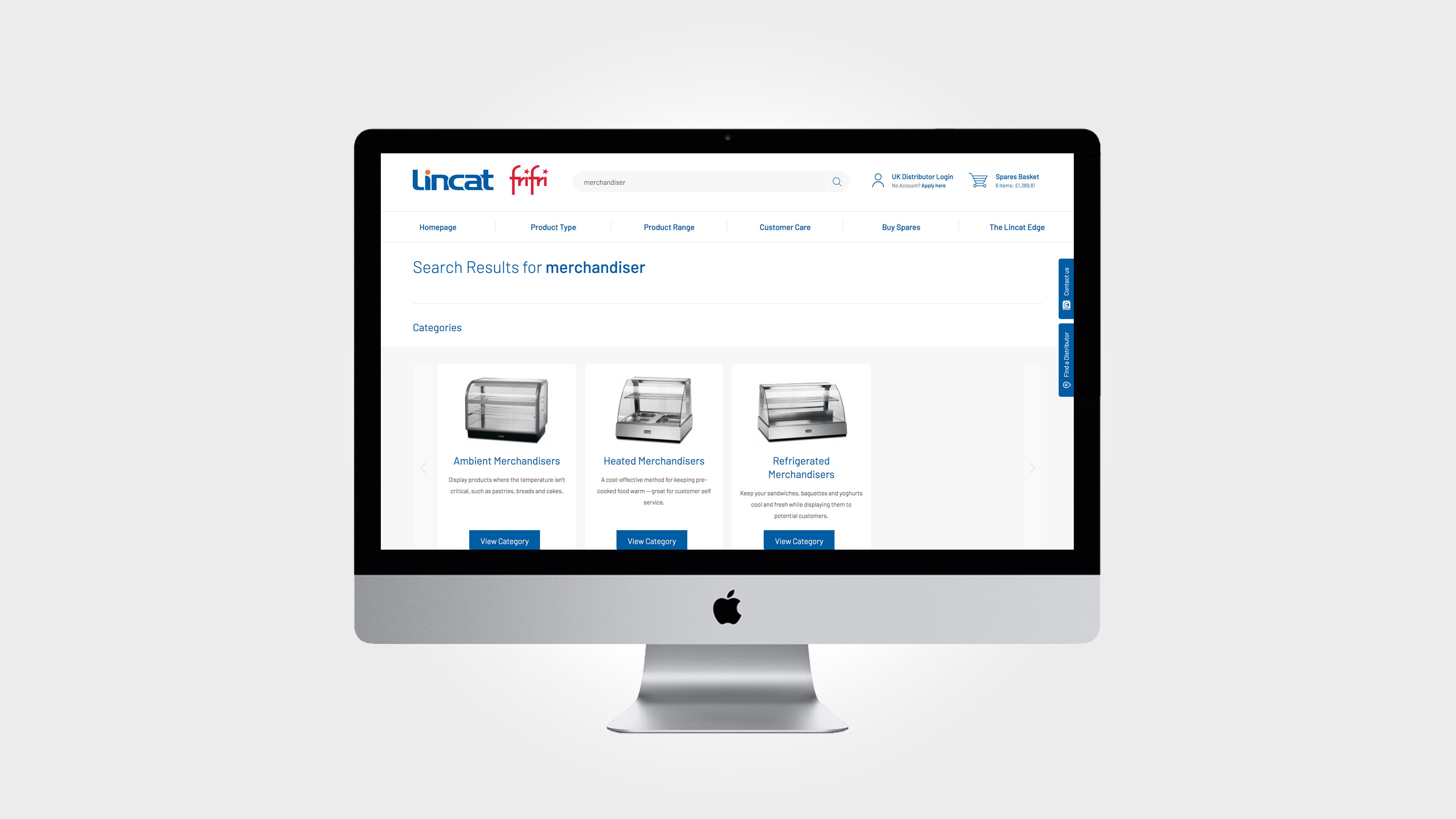Making Site Search Work
Improving the search function for Lincat
As part of our redevelopment and a complete redesign of the Lincat site, we were asked to improve their site search functionality.
The previous search function returned matching products, news stories and pages from across the website. However, for common queries such as ‘fryer’, this presented itself as a very long, poorly sorted list of products — which isn’t particularly useful to the end-user experience. ‘fryers’ (plural) also delivered quite a different set of results as well, no doubt frustrating the end-user.
Getting visitors to the correct content quickly and easily is (or at least, it should be) the aim of any website.
For a small, simple, site the navigation bar should be able to take care of most search or data requirements. However, with a site of this size and one that’s populated with thousands of products, search is a key requirement and pivotal to the effective functioning of the site.
As is often the case with many other websites out there, the search experience is regularly overlooked or a website will use an out of the box solution that doesn’t really work for the data available.
Lincat search example video: https://vimeo.com/328134575
Here’s the new Lincat site search function in action… as you can see, when the keyword is being inserted (in this case, ‘fryers’) the search bar predicts some suggestions for what the user is typing, while also showcasing a number of relevant links to the search term.
When it comes to the keywords used in a search, the ranking is also not always considered particularly well. The defaults for these are either based on the number of occurrences of a keyword or keyword density, where the shorter text will actually rank higher for the same number of keyword matches.
We realised that we already have suitable pages for many search queries and that we should be leveraging these as much as possible. Category and brand pages have had a lot of work figuring out the correct filters and key comparison data so are much more relevant than a list of products. Queries that match categories should be sent to the relevant category page wherever possible to give the customer a better experience. Some static pages across the site are also relevant for certain queries, in particular, the spares store and knowledgebase for technical document downloads.
The search functionality we created was built in order to cover four main sections of the site — ‘Products’ (including finished goods and spares), ‘Categories’, ‘Brands’ and ‘other pages’.
This has three main aspects, such as an ‘As you type’ quick search function that’s essentially an autofill feature, redirection and the main results page. Redirection occurs when we’re reasonably sure that there’s a better place for the user than a results page. This will happen with exact matches via the ‘Search function’ — on product code, category name or additional key terms.

Keyword ranking was looked at in depth here and we decided to use the area a keyword appears in as an indicator towards the relevancy of the end result.
Considering products, keywords appearing in the product name or code were ranked with 4 points, summary paragraph 2 points and main body just 1. This allowed us to better rank items ensuring those with relevant names appeared before those with relevant body content, even though the number of keyword matches or keyword density may be lower.
An important part of the search functionality is careful refinement — this ensures that failed searches are caught and refined for next time. A failed search can end up with no results, in which case this may be caused by a misspelling or alternate word this can easily be remedied by adding these to the keywords for a page. Another failure happens when too many results have been returned.
This poses the question that instead of a search results page with 100+ results is there a better place the visitor could be taken next time?
This refinement is something that we’ll keep on adjusting on an ongoing process and is one that will gradually curate the search based on a visitor’s use of the site — with the aim of ultimately delivering content that’s relevant to the user.
It’s clear from our work on this particular aspect of the project is that nothing is immediately apparent out of the gate and it’s only by continually assessing the parameters while considering every variable can you find a means of fine-tuning the ‘search function’ to achieve the necessary aims.
After all, they do say that practice makes perfect. That’s what we strive to achieve in everything we do (insert obligatory smiley face here). If you’d like to improve the search function on your own website, why not go with the team that can positively enhance how your customers can easily find what they need… with no worries.